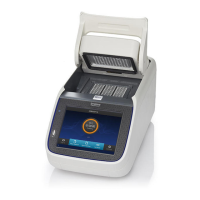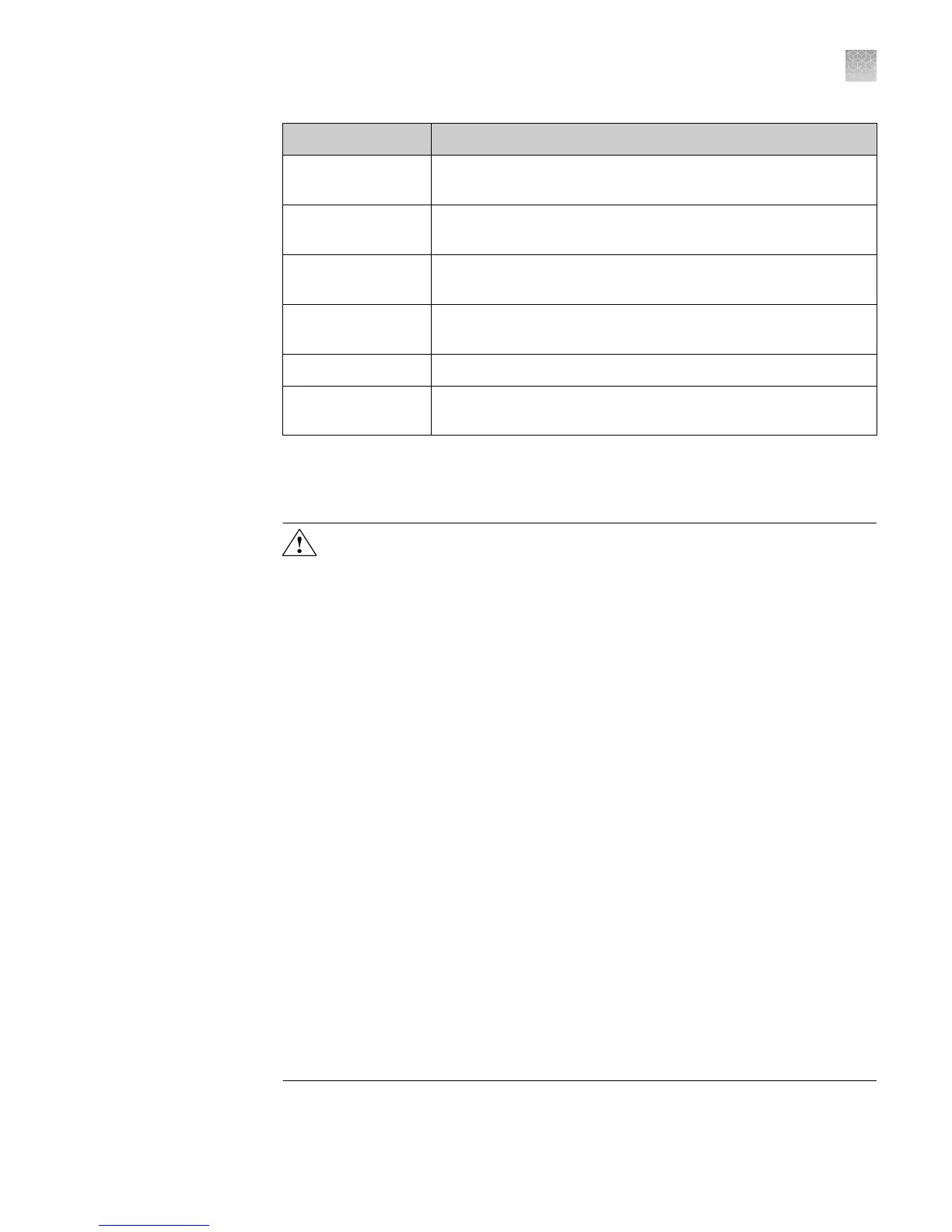Reference
Description
Directive 2012/19/EU European Union “WEEE Directive”—Waste electrical and electronic
equipment
Directive 2002/96/EC European Union “WEEE Directive”—Waste electrical and electronic
equipment
Directive 2011/65/EU European Union “RoHS Directive”—Restriction of hazardous
substances in electrical and electronic equipment
Directive 2002/95/EC European Union “RoHS Directive”—Restriction of hazardous
substances in electrical and electronic equipment
Directive 2006/66/EC European Union “Battery Directive”
MII Order #39 PRC “Management Methods for Controlling Pollution by Electronic
Information Products”
Chemical safety
WARNING! GENERAL CHEMICAL HANDLING. To minimize hazards,
ensure laboratory personnel read and practice the general safety guidelines for
chemical usage, storage, and waste provided below. Consult the relevant SDS
for specic precautions and instructions:
·
Read and understand the Safety Data Sheets (SDSs) provided by the
chemical manufacturer before you store, handle, or work with any chemicals
or hazardous materials. To obtain SDSs, see the “Documentation and
Support” section in this document.
·
Minimize contact with chemicals. Wear appropriate personal protective
equipment when handling chemicals (for example, safety glasses, gloves, or
protective clothing).
·
Minimize the inhalation of chemicals. Do not leave chemical containers open.
Use only with adequate ventilation (for example, fume hood).
·
Check regularly for chemical leaks or spills. If a leak or spill occurs, follow
the manufacturer's cleanup procedures as recommended in the SDS.
·
Handle chemical wastes in a fume hood.
·
Ensure use of primary and secondary waste containers. (A primary waste
container holds the immediate waste. A secondary container contains spills
or leaks from the primary container. Both containers must be compatible
with the waste material and meet federal, state, and local requirements for
container storage.)
·
After emptying a waste container, seal it with the cap provided.
·
Characterize (by analysis if necessary) the waste generated by the particular
applications, reagents, and substrates used in your laboratory.
·
Ensure that the waste is stored, transferred, transported, and disposed of
according to all local, state/provincial, and/or national regulations.
·
IMPORTANT! Radioactive or biohazardous materials may require special
handling, and disposal limitations may apply.
Environmental
design
Appendix F Safety
Chemical safety
F
SimpliAmp
™
Thermal Cycler User Guide
87

